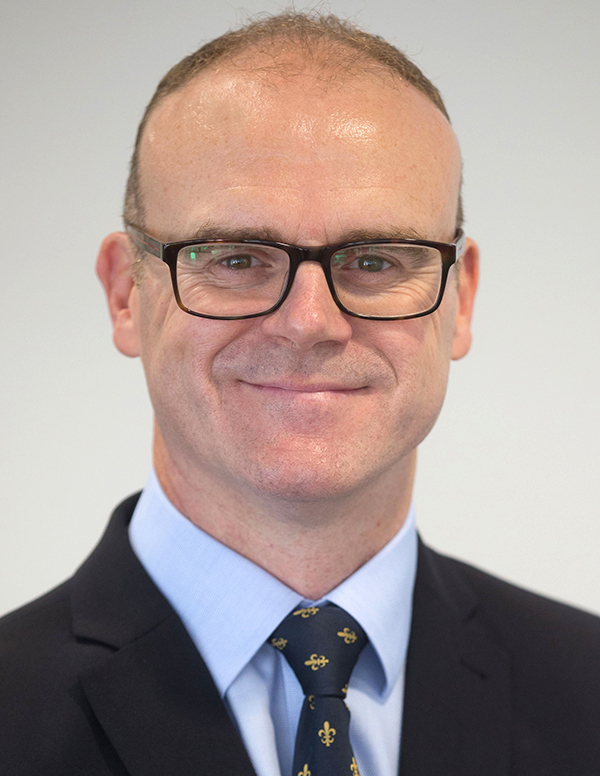Skanska is at the forefront of exploring new technology across all aspects of the building process. Denise Chevin finds out how its technical director Peter Jones is harnessing gaming technology for bids, analysing data to spot defect trends and planning a new digital twins venture.
Talk us through your role
My job is to oversee six technical functions: engineering; BIM and digital; design management; facades; planning; and quality – which takes in operation efficiency and technology such as DfMA and offsite. I have a central role, with a team of 12, with a number of section heads reporting in to me.
I’ve been in the role for two years, though at Skanska for 15, where I’ve come through the design management route.
It’s a broad role – what drives it and what are your goals?
One of the biggest challenges is the huge array of technology out there at the moment, and knowing where to invest and focus efforts. And then if we find something that works well in trials, scaling up.
Our decision-making is centred on four key goals: improving client satisfaction and engagement; driving productivity improvements; reducing defects; and zero accidents. Ultimately, it’s about improving customer satisfaction. For us to adopt new technology it’s has to impact on one of those four areas.

A benefit of digitalising everything is being able to collect so much data and then analysing that data to spot trends. You can look at the snagging reports across the company, say, and spot common issues, similarly for NCRs. The senior management team now get data.– Peter Jones, Skanska Building
We’ve been looking at a number of new technologies and trials including HoloLens augmented reality, the use of what3words to help more efficient deliveries, for example, and semi-autonomous drone trials.
Can you talk us through some current successes and how you are measuring them?
In terms of client engagement, we’ve been particularly pleased by the response we have had to the use of the gaming platform Unity which we’ve used in client presentations during the bidding process.
We employ people with gaming experience in the company, and writing our own script for this platform is not expensive. We’re able to integrate the script with BIM models and 4D planning software, to bring to life how we plan to build a scheme, who would be working on it and the timetable. It’s been incredibly effective helping to convey our approach to the project and really captured clients’ imagination.
In terms of improving productivity, we’ve been concentrating on digitalising onsite processes. So, all staff have tablets for recording snagging, non-conformance reports and site diary.
A benefit of digitalising everything is being able to collect so much data and then analysing that data to spot trends. You can look at the snagging reports across the company, say, and spot common issues, similarly for NCRs. The senior management team now get data.
How else are you using data?
As part of our data collecting we’re also looking to use HSE record keeping statistics, for which we’re obliged to collect the number of man hours worked, and combine that with financial data, in terms of spend. This allows us to calculate rate of spend and from that plot productivity and how much using particular technology increases that – and also, how it differs across the different sites.
At the moment that’s on a project level, but we want to be able to drill down into different packages, and compare productivity across the same packages across different projects.
Where have you been able to measure efficiency gains so far?
In terms of onsite technology, we’ve found that using Field View, project managers have been able to improve productivity on key processes (eg undertaking site inspections or issuing of permits to work) by up to 20% through a digital way of working – this is equivalent to a time saving of eight hours per week.
We have been adopting Revizto software as a design collaboration too, which allows the us to superimpose 2D drawings on 3D models to undertake more effective design reviews. It’s great for those struggling to review design in a 3D space. We’ve found huge productivity gains through the use of this tool.
For example, the review of large design packages (eg +1,000 drawings) that may have previously taken 30 days to complete a full review cycle, we are now finding is only taking 24 days – equating to a further 20% increase in productivity.
What technology are you exploring to reduce defects?
We’ve been using Topcon technology to quickly compare that what we’ve built onsite matches the BIM model. This might have taken three steps in the past – but simply attaching a laser scanner to the building element allows us to spot in a matter of hours if everything on the building has been positioned and fixed properly. It also allows us to check on M&E and check the correct level of the floors.
We think this technology has enormous potential. Our plan is to use it across all our London sites. We are looking to set up a central digital surveying team who will operate the equipment and go from site to site.
What we’re looking to do now is quantify how much it is improving efficiency and reducing defects.
What are your plans around digital twins?
We are really excited about the prospect of digital twins and have set up a new service offering called Digital Estates. We have the in-house expertise to convert the existing building assets of estates like universities and government departments into asset-rich digital models – IoT enabled – and then use the model to more efficiently manage the building. We expect this to be able to save operational and maintenance costs on existing buildings by up to 30%.
We did this originally for the Met Office to help it manage its estate.
Main image: Using Field View, Skanska’s project managers have been able to improve productivity on key processes











